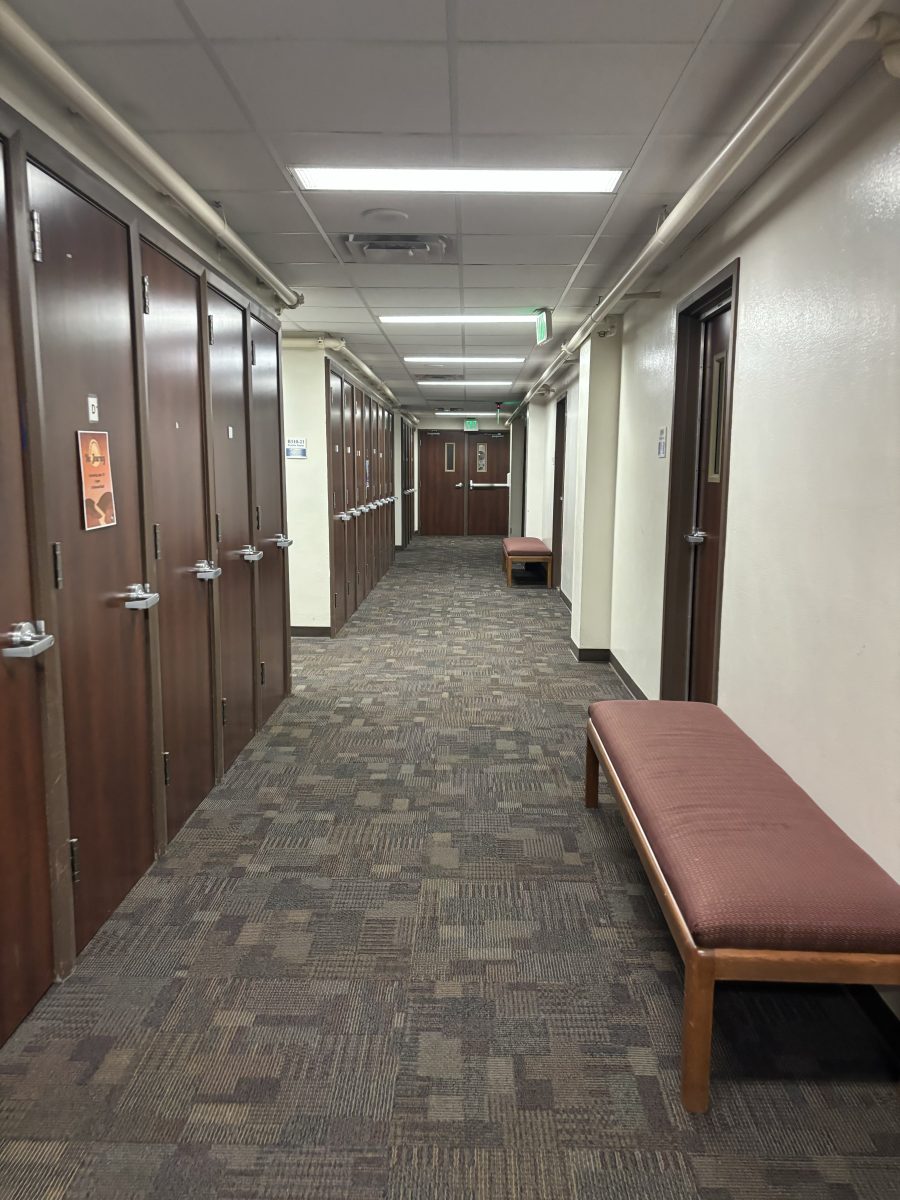A few extra feet walked around the university’s seal in Dallas Hall during this year’s Rotunda Passage. The class of 2006 has the potential to be the largest first-year class in the university’s history.
Although an exact number won’t be available until the end of the fall enrollment process on Friday, the Office of Enrollment Services is estimating that this year’s first-year class will reach 1,380 students.
Last year, the class of 2005 began its college career 1350 strong, and while 30 extra students may not sound like a huge overshot, it is significant in a year when a higher admissions standard had originally led Enrollment Services Director Ron Moss to believe that SMU would be fortunate to maintain last year’s class size.
When putting together each year’s first-year class, the admissions office plans for about 40 to 50 cancellations. As other universities begin to open a few spots to students on their wait lists, many decide they’d rather attend those schools.
This year, as Americans began to feel the toll of a suffering economy, Moss was ready for a higher number of cancellations. However, the actual result surprised him.
“In April and May, cancellations actually started lagging,” Moss said.
As students began to arrive on campus last week, Moss’s office continued to make calls to those who had not yet shown up in order to hone in on the exact size of the class.
The ripple effect.
A larger class means more than another possible notch in the SMU record book. A number of university offices may have to make special arrangements to accommodate the class’s size.
Jo Goyne leads the university’s Rhetoric program, which organizes the writing courses all first-years are required to take.
“We are prepared [for the large numbers,]” Goyne said. “We have the faculty and we’re always ready with the ability to expand the classes if it comes to that.”
When planning the number of rhetoric sections to offer each semester, Goyne and her staff take everything from the prior year and work from there to secure enough rooms and faculty.
One of the selling points of the rhetoric classes is that each section is usually limited to around 15 students.
“If we need to, we can add one more [student] to each class,” Goyne said. “With one per section that will accommodate an extra 64 students.”
However, she is wary of adding more than that.
“We like to keep these sections small. If we need to, we can open more sections,” Goyne said. “I guess we’ll see where we are when the add/drop period is over.”
Residence Life and Student Housing is also experiencing a crunch. As reported Friday in The Daily Campus, due to the larger first-year class as well as a rising number of returning upperclassmen, the residence halls are at extended capacity.
Because all first-years are required to live on campus and many room assignments for older students were decided last spring, other accommodations have to be made.
“There are a combination of three options for temporary housing,” said Eddie Hull, director of Residence Life and Student Housing. “It will either be with a resident assistant, in a guest room or in one of the apartments on campus. This will last at least until the first day of class. We can’t say how long temporary may be.”
Along with the bedding and books they brought with them to SMU, many first-years will also bring cars. An increased number of new students on campus can only exacerbate an already cramped parking situation.
However, this year, first-year men can no longer park their cars on the third, fourth and fifth floors of the Moody Parking Garage where they have been relegated for past years. This year, they will only be allowed to park in the Dedman 3 lot just south of the Dedman Center for Lifetime Sports.
“We thought we could relocate freshman guys to the Dedman lot and alleviate that parking pressure for other people,” said Capt. Mike Snellgrove of the SMU Police Department. “It’s actually probably a shorter walk for first-years living in the south quad.”
All departments agree that while extra accommodations may be in progress, they will be ready to respond to whatever the eventual size will be.
“I think we’re finding that classes in the 1,300s are manageable without hindering the students’ college experience,” Moss said.
We saw it coming.
Fortunately, said Moss, the university was not completely off guard in its preparations. Almost two years ago, Provost Ross Murfin reinstituted a strategic enrollment management committee in order to bring the university’s admission, enrollment and retention processes in-line with the overall vision for the university.
The committee is made up of a cross section of representatives from groups such as the faculty, Student Services, Residence Life and Student Housing, the Learning Enhancement Center, advising, Student Affairs and the financial aid office.
“It’s really enabled us to bring some of the key influence peddlers together to work together,” Moss said. “With everyone working so closely together, I think we all had a bit of a heads up [on the class size] this year.”
Since its inception, the committee has met bi-weekly to identify and implement a plan to achieve the strategic goals of the university to move into the ranks of the top 50 universities in the nation within five to 10 years.
The large size of the class of 2006 is not a single landmark, Moss said. It’s really the third class in a five-year plan aimed toward accomplishing those goals. Each of these classes has been increasingly stronger academically than the one before it.
“The beautiful thing is that this increases the intellectual dynamism of the university,” Moss said.
Because the first-year class is a critical identifier of the status of a university, the committee has worked to model its admission process on its target schools.
“By studying other schools we were really able to quantify our objectives,” Moss said. “We noticed our benchmark schools had larger applicant pools, higher selectivity and a larger first-year class.”
During the admissions process this spring, SMU received a record number of applications and narrowed its selectivity to around 65 percent.
“Most of our benchmark schools hover around a 60 percent admission rate,” Moss said. “Five years ago at SMU, our admission rate was 88 percent.”
And while the first-year class is larger this year, Moss said this was not done to mimic the benchmark schools, but rather to broaden campus diversity, meet university revenue needs and maximize academic capability.
“The growth of the application pool was very purposeful,” Moss said. “We wanted to have a variance in interests, ideas, experiences and backgrounds so that [the students] can bring all of that to share.”
With a tightening of the admissions belt and a greater applicant pool to pick from, the profile of this first-year class is a bit different than those before it. The average SAT score of the class of 2006, which is just shy of 1200, is 12 to 14 points higher than it has been in years past.
So as these statistics become closer to final, Moss’s office continues to call students who have paid their deposit but have not yet moved into the residence halls to confirm that they still plan on coming to SMU. While this has uncovered a few more cancellations, the class of 2006 is well on its way to becoming the largest class since the late 1980s, the last time enrollment hit the 1380s.
“We really are on a deliberate path here to move SMU where it has the potential to be,” Moss said. “This class is just a piece of the overall equation.”









